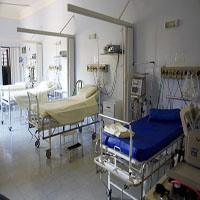 Smart Citations
Smart CitationsSee how this article has been cited at scite.ai
scite shows how a scientific paper has been cited by providing the context of the citation, a classification describing whether it supports, mentions, or contrasts the cited claim, and a label indicating in which section the citation was made.
Physiological deterioration in the Emergency Department: The SNAP40-ED study
Continuous novel ambulatory monitoring may detect deterioration in Emergency Department (ED) patients more rapidly, prompting treatment and preventing adverse events. Single-centre, open-label, prospective, observational cohort study recruiting high/medium acuity (Manchester triage category 2 and 3) participants, aged over 16 years, presenting to ED. Participants were fitted with a novel wearable monitoring device alongside standard clinical care (wired monitoring and/or manual clinical staff vital sign recording) and observed for up to 4 hours in the ED. Primary outcome was time to detection of deterioration. Two-hundred and fifty (250) patients were enrolled. In 82 patients (32.8%) with standard monitoring (wired monitoring and/or manual clinical staff vital sign recording), deterioration in at least one vital sign was noted during their four-hour ED stay. Overall, the novel device detected deterioration a median of 34 minutes earlier than wired monitoring (Q1, Q3 67,194; n=73, mean difference 39.48, p<0.0001). The novel device detected deterioration a median of 24 minutes (Q1, Q3 2,43; n=42) earlier than wired monitoring and 65 minutes (Q1, Q3 28,114; n=31) earlier than manual vital signs. Deterioration in physiology was common in ED patients. ED staff spent a significant amount of time performing observations and responding to alarms, with many not escalated. The novel device detected deterioration significantly earlier than standard care.
Downloads
Citations
10.4081/ecj.2021.10139
How to Cite
PAGEPress has chosen to apply the Creative Commons Attribution NonCommercial 4.0 International License (CC BY-NC 4.0) to all manuscripts to be published.

 https://doi.org/10.4081/ecj.2021.9711
https://doi.org/10.4081/ecj.2021.9711




